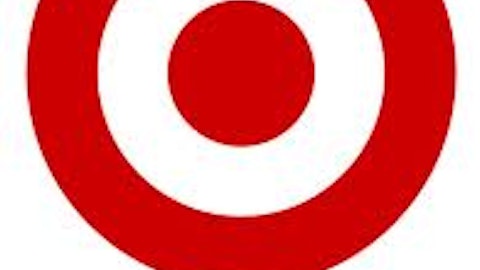For a while I’ve pretty much ignored an entire industry in the stock market. I’ve really had nothing to do with any grocery related company, except through ownership of Target Corporation (NYSE:TGT), and I didn’t buy Target because of their push into the grocery business. To be blunt, the grocery business is cutthroat, margins are terrible, and many companies just seemed to be on bad financial footing. I won’t say that I’ve changed my mind completely, but The Kroger Co. (NYSE:KR) is making me question my view.
Not just a supermarket
The thing that’s different about The Kroger Co. (NYSE:KR) is, the company isn’t just a supermarket chain. The company owns over 2,400 supermarket stores, along with 786 convenience stores, 328 fine jewelry stores, over 1,100 fuel centers, and 37 food processing plants. The company’s diversity helps insulate them from challenges that have beset lesser grocery store chains.
However, Kroger doesn’t just have to worry about regular supermarkets. The company faces competition from both Target and Wal-Mart Stores, Inc. (NYSE:WMT), as well as organic grocers like Whole Foods Market, Inc. (NASDAQ:WFM). With Target and Wal-Mart Stores, Inc. (NYSE:WMT) offering a much broader selection of products, and Whole Foods offering a broader selection of organic foods, Kroger is trying to strike a balance between the two.
The Kroger Co. (NYSE:KR) has been successfully competing, with sales up 3.7% in the current quarter, and EPS up 16%. These strong results were driven by a same-store sales increase of 3.5%. Kroger likes to point out that the company has, “37 consecutive quarters of positive same-store sales growth.”
I Wish That Was Enough
There are a few issues holding me back from buying the shares. First, the company’s gross margin puts the company at a disadvantage to their peers. In the current quarter, Kroger’s gross margin was 20.92%. By comparison, even Wal-Mart has a better gross margin at 26.56%. Target’s slightly better pricing power allowed a 27.70% gross margin, and Whole Foods margin stands at 34.96%.
This lower gross margin means The Kroger Co. (NYSE:KR) can’t afford to cut prices to compete with these companies. In addition, for customers that want an organic selection, there is no comparison between Kroger and Whole Foods. Customers who want to buy everything they need in one trip would be better off shopping at Target or Wal-Mart Stores, Inc. (NYSE:WMT).
A second issue at Kroger is something that would normally be a positive. The company has retired 8.41% of their diluted share count on a year-over-year basis. In the last year, Kroger’s adjusted free cash flow was over $1 billion, looking at just net income, plus depreciation, and then subtracting capital expenditures.
Using this adjusted free cash flow calculation; the company paid just 24.38% in dividends. This would argue that Kroger should have had plenty of money to retire shares. However, the company actually took on over $700 million in additional long-term debt to fund these repurchases. Longer-term, I would prefer the company not spend money it doesn’t have.

